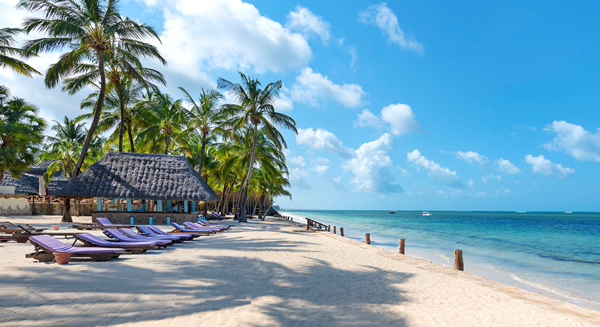Kenya
Kenya’s magic is embedded everywhere you look, from wandering majestic elephants to its breathtaking Mountains, Forests and secluded waterfalls. The land is diverse, offering desert patches alongside snow-capped mountains, valleys and volcanoes, with beautiful beaches whose dark blue waters are home to colourful coral reefs. Kenya has many tourist attractions ranging from the sandy beaches at the coast, diverse flora and fauna, game parks, cultural heritage, scenic landscapes just to name but a few.
Kenya has many tourist attractions ranging from the sandy beaches at the coast, diverse flora and fauna, game parks, cultural heritage, scenic landscapes just to name but a few. The Nairobi National Park is within the boundaries of the City of Nairobi. Also close by is the popular Giraffe Centre where visitors can watch and even feed the giraffes. Other attractions include the National museum, Amboseli National Park, Lake Nakuru, Hells gate, Tsavo East and West National park to mention but a few. The country’s notable tourist attraction is the annual Wildebeest Migration at the Maasai Mara. It is a sight to behold and has been dubbed the 7th Wonder of the World.
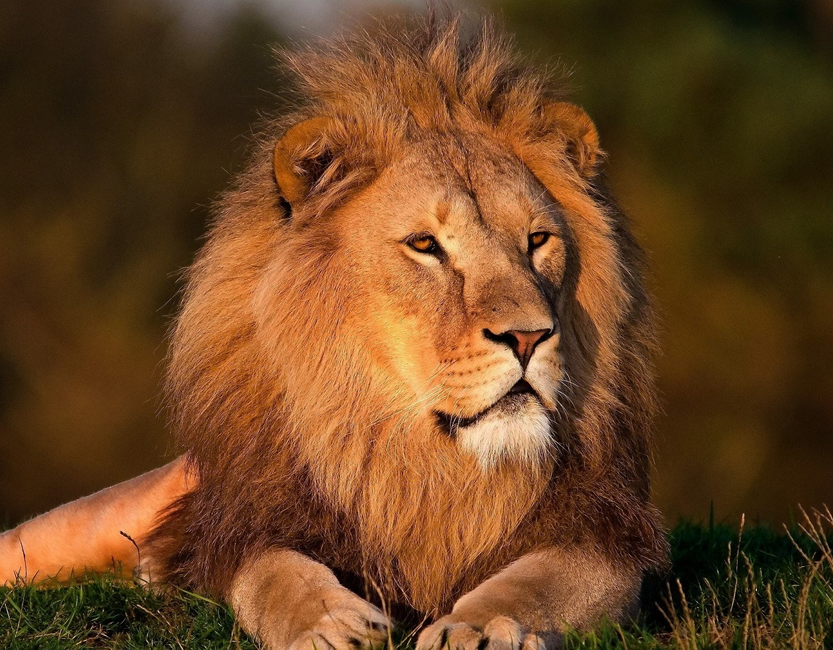
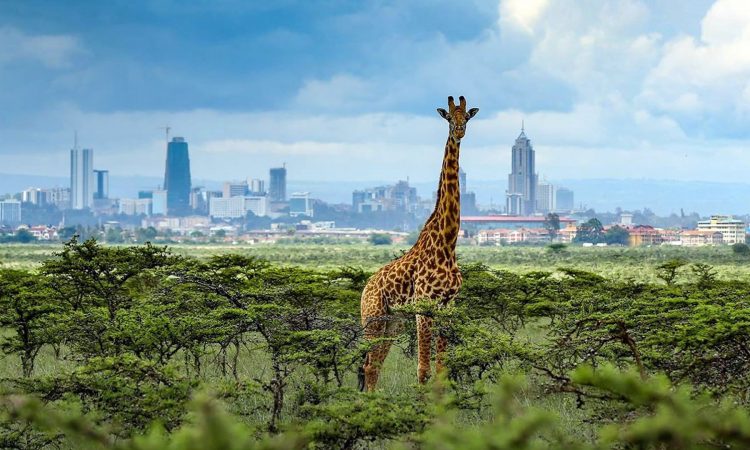
Nairobi National Park
A short drive out of Nairobi’s central business district is the Nairobi National Park. With wide open grass plains and backdrop of the city scrapers, scattered acacia bush play host to a wide variety of wildlife including the endangered black rhino, lions, leopards, cheetahs, hyenas, buffaloes, giraffes and diverse birdlife with over 500 species recorded. Visitors can also enjoy the park’s picnic sites, three campsites and the walking trails for hikers.
Nairobi National Park has the Nairobi Animal Orphanage, that is located inside the park which serves treatments and rehabilitation center for wild animals like the lions, cheetahs, hyenas, jackals, servals and among others also the bird species can be viewed including the parrots, guinea fowls, crowned cranes, ostriches and many others.
Nairobi National Park is amazed with other attractions like the Ivory burning Site Monument, Walking trails at hippo pools, the Nairobi Safari Walk and the Orphanage. Despite its proximity to the city and its relative size, it boasts a large and varied wildlife population, and is one of the Kenya’s most successful rhinoceros sanctuaries.
Giraffe Centre
The Giraffe Centre is the creation of the African Fund for Endangered Wildlife (A.F.E.W. Kenya), a Kenyan non-profit organization.
Their main purpose is to educate Kenyan school children and youth on their country’s w ildlife and environment, as well as give local and international visitors an opportunity to come into close contact with the world’s tallest species, the giraffe.There are now over 300 Rothschild Giraffe safe and breeding well in various Kenyan national parks.
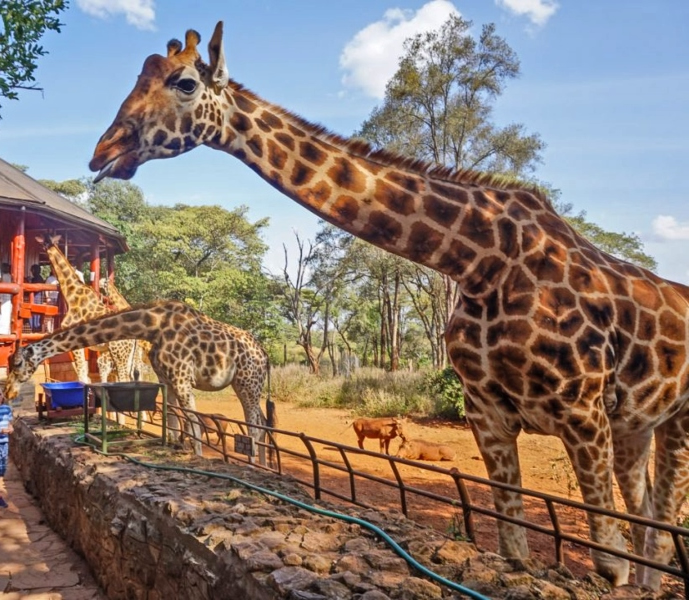

Maasai Mara National Reserve
Maasai Mara (Masai Mara) National Reserve is situated in south-west Kenya and is one of Africa’s Greatest Wildlife Reserves. It is a world-renowned destination for safari-goers and nature enthusiasts alike. With it’s diverse array of wildlife, breathtaking landscapes, and cultural experiences, it’s easy to see why this reserve is considered one of the top safari destinations in the world.
Are you ready for an unforgettable adventure in the heart of Africa? Look no further than the majestic Maasai Mara National Reserve. With its breathtaking landscapes, diverse wildlife, and rich cultural heritage, the Maasai Mara offers an unparalleled safari experience that will leave you in awe.
Bordering with the Serengeti National Park in Tanzania it forms Africa’s most diverse, incredible and most spectacular eco-systems and possibly the world’s top safari big game viewing eco-system. As home to the wildebeest migration, it is nothing short of amazing. It is one of the natural world wonders – Africa’s 7th natural wonder that is a must do in a travellers bucket list.
Best time to be in Kenya to experience the wildebeest migration is between July – October although Kenya as a whole is a great all year-round travel destination.
Masai Mara is a unique wildlife conservation haven famous for its spectacular natural diversity of wildlife and is the premier Kenya Safari location in East Africa, offering visitors numerous reasons to visit this animal paradise. Large numbers of Lions, Cheetah, Elephant, Rhino, African Buffalo, Wildebeest, Giraffe, Zebra and many more animals are found in the park in their natural habitat, unconfined and free to roam the vast Kenyan wilderness stretching for miles on end. This national reserve and conservancies are brimming with life and offer safari travellers a wide variety of activities to choose from, whether it’s taking to the skies for a high-flying hot-air balloon adventure at sunrise or hit the road for a 4X4 safari, any traveller is sure to leave the Masai Mara with unforgettable experiences and lifelong memories.
Nairobi National Park has the Nairobi Animal Orphanage, that is located inside the park which serves treatments and rehabilitation center for wild animals like the lions, cheetahs, hyenas, jackals, servals and among others also the bird species can be viewed including the parrots, guinea fowls, crowned cranes, ostriches and many others.
Nairobi National Park is amazed with other attractions like the Ivory burning Site Monument, Walking trails at hippo pools, the Nairobi Safari Walk and the Orphanage. Despite its proximity to the city and its relative size, it boasts a large and varied wildlife population, and is one of the Kenya’s most successful rhinoceros sanctuaries.
Amboseli National Park
Amboseli National Park is located in Loitoktok District, Rift Valley Province of Kenya. Crowned by Mount Kilimanjaro, Africa’s highest peak, the Amboseli National Park is one of Kenya’s most popular parks. The name “Amboseli” comes from a Maasai word meaning “salty dust”, and it is one of the best places in Africa to view large herds of elephants up close.
Nature lovers can explore five different habitats here ranging from the dried-up bed of Lake Amboseli, wetlands with sulphur springs, the savannah and woodlands. They can also visit the local Maasai community who live around the park and experience their authentic culture.
Amboseli has an endless underground water supply filtered through thousands of feet of volcanic rock from Kilimanjaro’s ice cap, which funnel into two clear water springs in the heart of the park and has an ecosystem that spreads across the Kenya-Tanzania border.
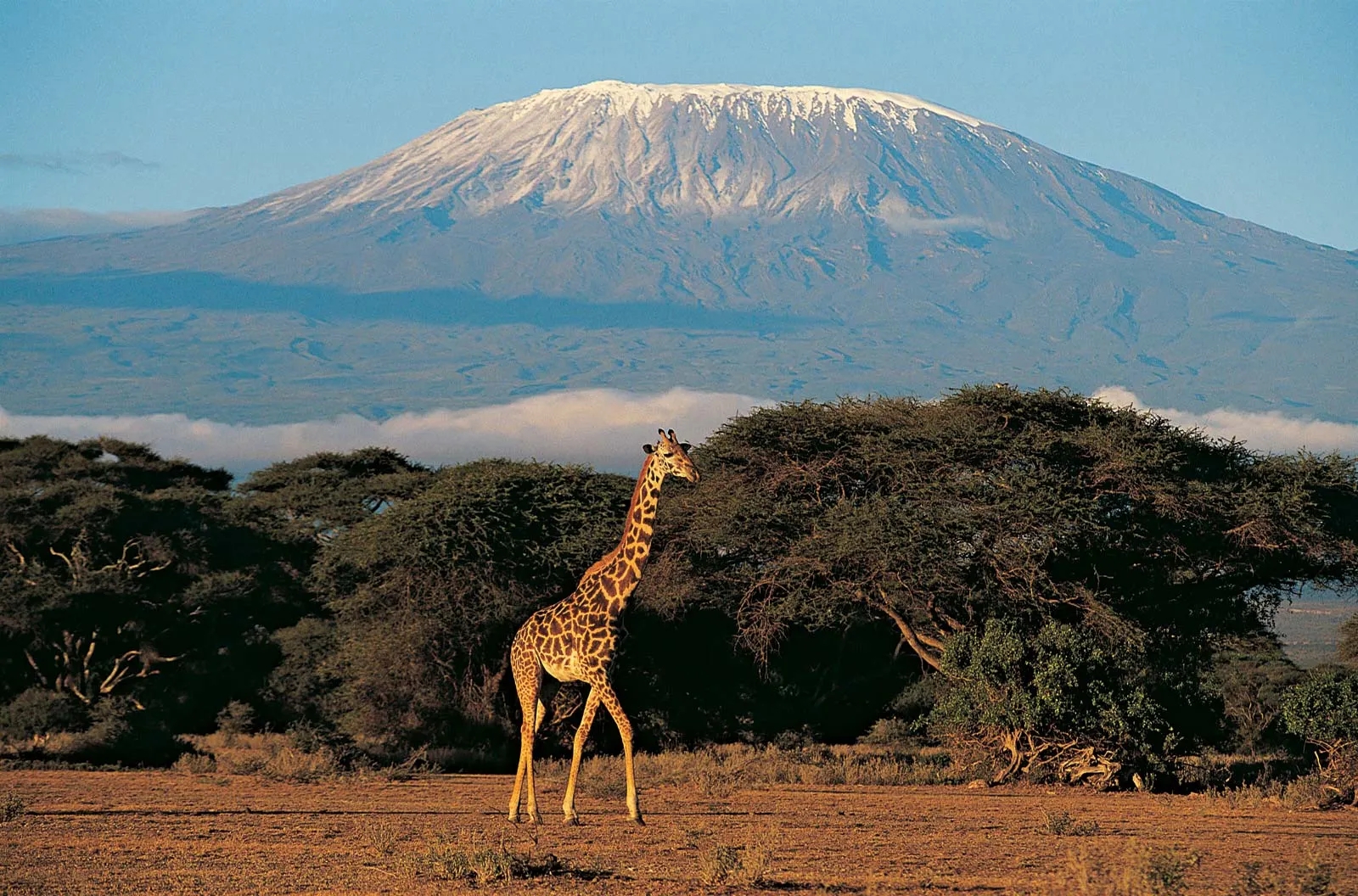
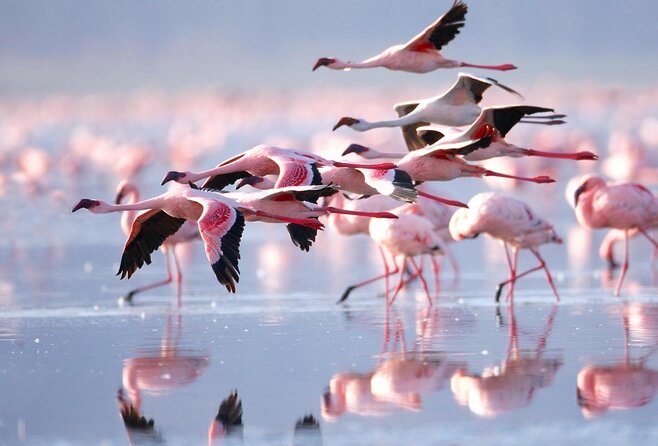
Lake Nakuru National Park
On the floor of the Great Rift Valley, surrounded by wooded and bushy grassland, lies the beautiful Lake Nakuru National Park. Visitors can enjoy the wide ecological diversity and varied habitats that range from Lake Nakuru itself to the surrounding escarpment and picturesque ridges.
It is ideal for bird watching, hiking, picnic and game drives and it is famous for the vast numbers of flamingos that feed off its algae.
The park lies south of Nakuru, the fourth-largest settlement in Kenya. Feeding pressures and pollution have reduced the flamingo population in recent years, but there are now signs of recovery.
Lake Nakuru National Park is also home to a large rhino population. These beasts can often be spotted lazing under the shade of the luscious acacia trees that surround the lake, waterfalls, cliffs, and forests, the lake is a vital water source for zebras, buffalos, and the endangered Rothschild giraffe.
Samburu National Reserve
Samburu National Reserve is located in Northern Kenya and is a premier game reserve situated on the banks of the Ewaso Ng’iro river. This vast expanse of remote pristine wilderness measures 165 square kilometers in area and borders the Ewaso Ng’iro River to the south, which separates it from the Buffalo Springs National Reserve. Samburu Reserve is a unique wildlife conservation haven famous for an abundance of rare species of animals such as the Grevy Zebra, Somali Ostrich, Reticulated Giraffe, Gerenuk and the Beisa Oryx.
The reserve is also home to a population of close to 900 Elephants. Large predators such as the Lion, Leopard and Cheetah are an important attraction (Kamunyak the famous Lioness that adapted a baby Oryx is a resident in the reserve). Samburu is in fact one of the better locations in Kenya to spot a Leopard. Wild dog sightings are also a common attraction to this unique protected area and Birdlife is abundant with over 450 recorded species.
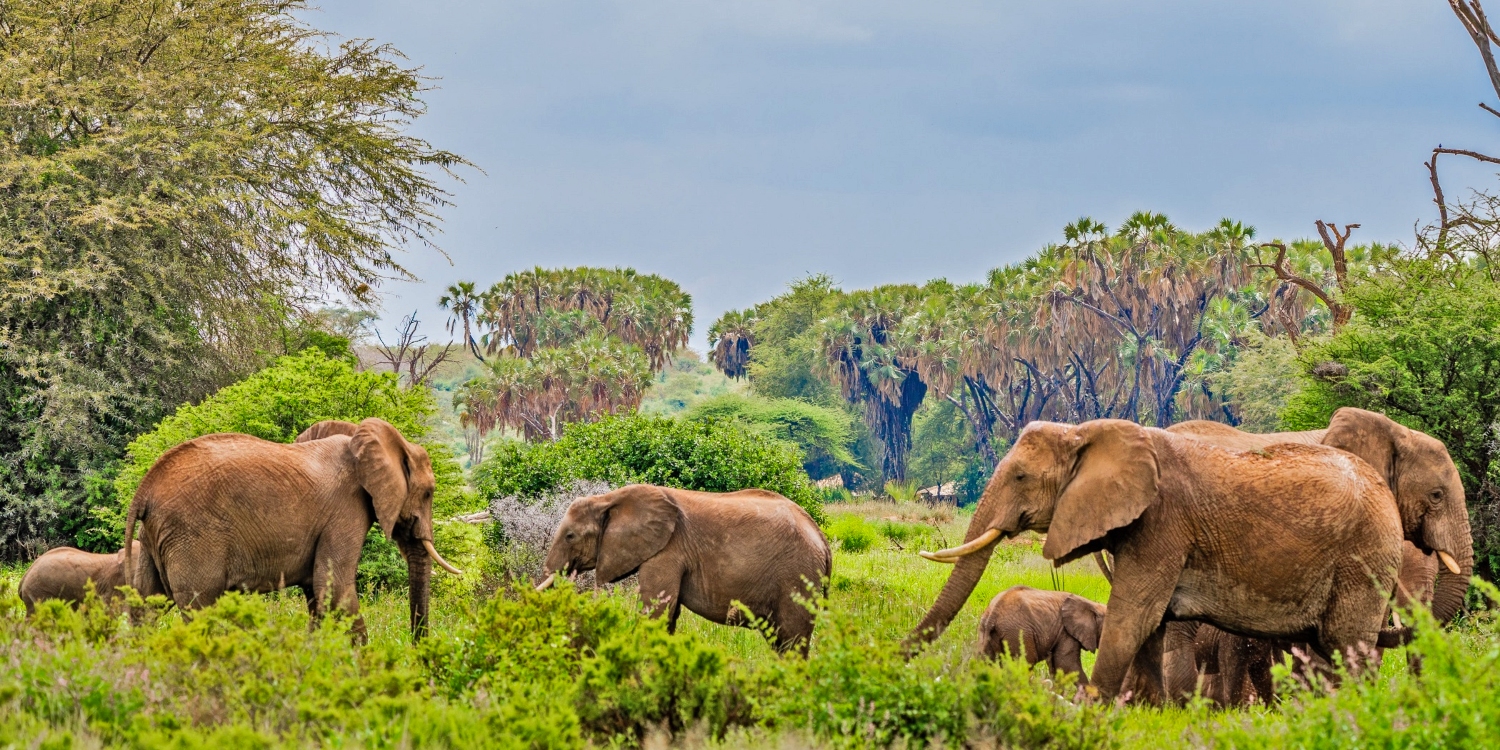
Samburu offers a number of notably exciting activities and one of the more thrilling of these is the Safari game viewing and bird watching – the geography and climate of Samburu allows for quality wildlife viewing all year round. Another popular experience is Samburu cultural tour which allows visitors a fascinating insight into the unique way of life of the renowned Samburu people, a pastoralist and warrior tribe found in Kenya and other parts of East Africa. In addition, you have Nature walks, Camel Trekking safaris, Bush meals and Sundowners as some of the other popular activities available to enjoy in the Reserve as a tourist visiting this park.
Alluring and dreamy, the rise and fall of the misty valleys, hills and mountains of the spectacular Aberdare ranges that sit across Nyeri and Nyandarua counties are a sight to behold. Open moorlands and dense forests characterize the vast park coupled with a deep lush of clean crisp air perfect for a break away from life in search of relaxation, peace and tranquillity. The picturesque mountainous scenery is one of the highlights of a visit to this wonderland.
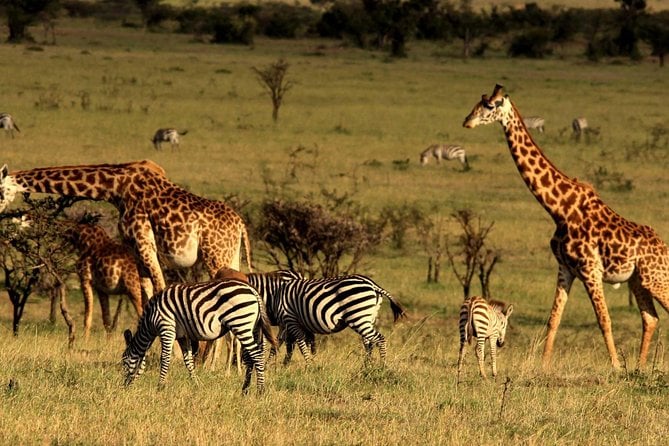
The park is renowned for its torrential waterfalls plunging from cloud-shrouded heights to spray-filled ravines. The magnificent Karuru waterfalls, whose ice cold crystal clear waters drop an impressive 300meters, the spectacular Gura water falls which torrent from the opposite side of the same gorge, the sheer drop of the Chania water falls, and the enchanting Magura water falls which cascade across the yawning mouth of the Queen’s Cave.
The twin peaks/towers are also a magical sight in the foggy but spectacular landscapes of the moorlands. The pair of rocks located near each other are outcrops formed because of volcanic formations. Rare wildlife species include–Black rhino, Black Serval, Black Leopard (seldom seen) and the Eastern Bongo (a huge forest Antelope).
Also present are elephants, buffalos, giraffes, blue and colobus monkey, leopard, lion, warthog, giant forest hog, bushbuck, red duiker, suni, reedbuck and eland. Lying above the tree line, the scenery is spectacular with its mountainous terrain covered in thick tropical forests swathed in mist. A belt of bamboo vegetation is a favourite hideout for the rare and elusive forest antelope.
Tsavo East & West National Park
The sight of dust-red elephant wallowing, rolling and spraying each other with the midnight blue waters of palm-shaded Galana River is one of the most evocative images in Africa. This, along with the 300 kilometres long Yatta Plateau, the longest lava flow in the world, make for an adventure unlike any other in the Tsavo East. The park forms the largest protected area in Kenya and is home to most of the larger mammals, vast herds of dust –red elephant, Rhino, buffalo, lion, leopard, pods of hippo, crocodile, waterbucks, lesser Kudu, gerenuk and the prolific bird life features 500 recorded species.
“Land of Lava, Springs, Man-Eaters & Magical Sunsets”
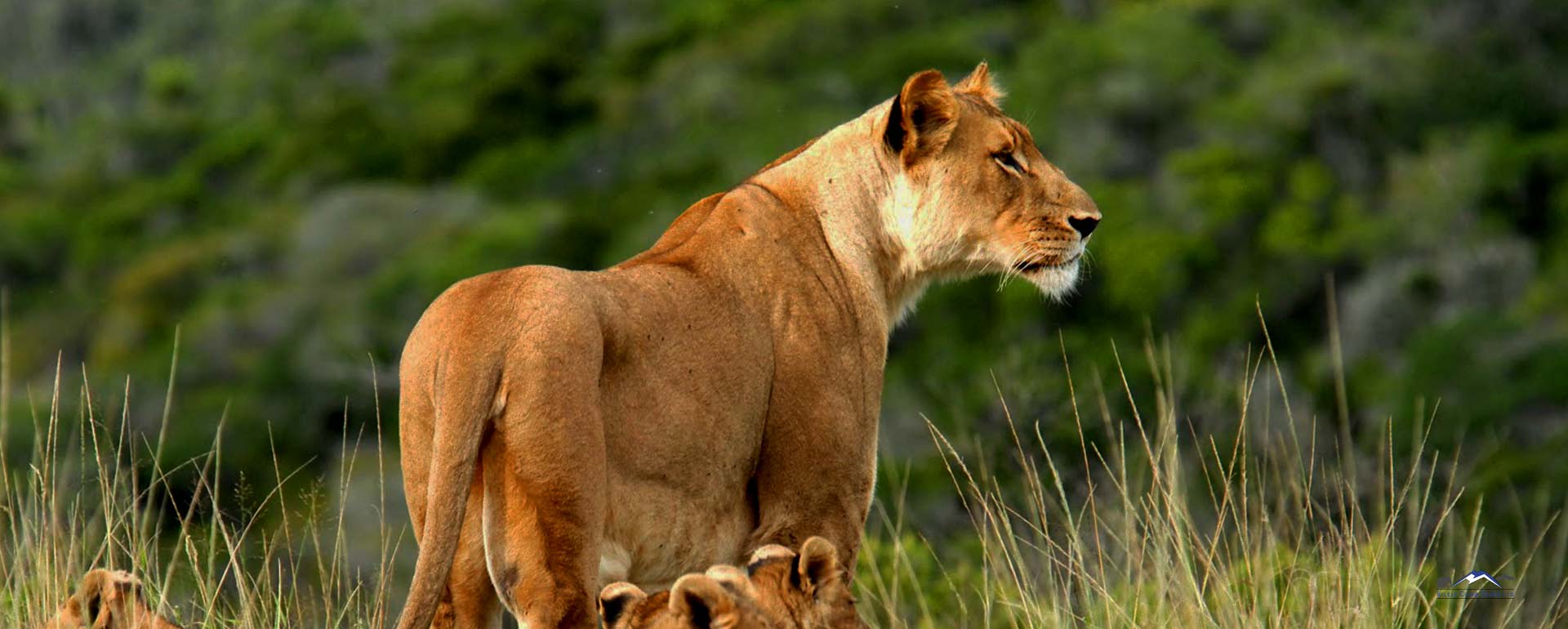
From the sight of fifty million gallons of crystal-clear water gushing out of from the under parched lava rock that is the Mzima Springs to the Shetani lava flows, Tsavo West is a beautiful, rugged wilderness. The savannah ecosystem comprises of open grasslands, scrublands, and Acacia woodlands, belts of riverine vegetation and rocky ridges including the Poacher’s Lookout where visitors can see the teeming herds in the plains below. Tsavo West offers some of the most magnificent game viewing in the world and attractions include elephant, rhino, Hippos, lions, cheetah, leopards, Buffalos, diverse plant and bird species including the threatened corncrake and near threatened Basra Reed Warbler.
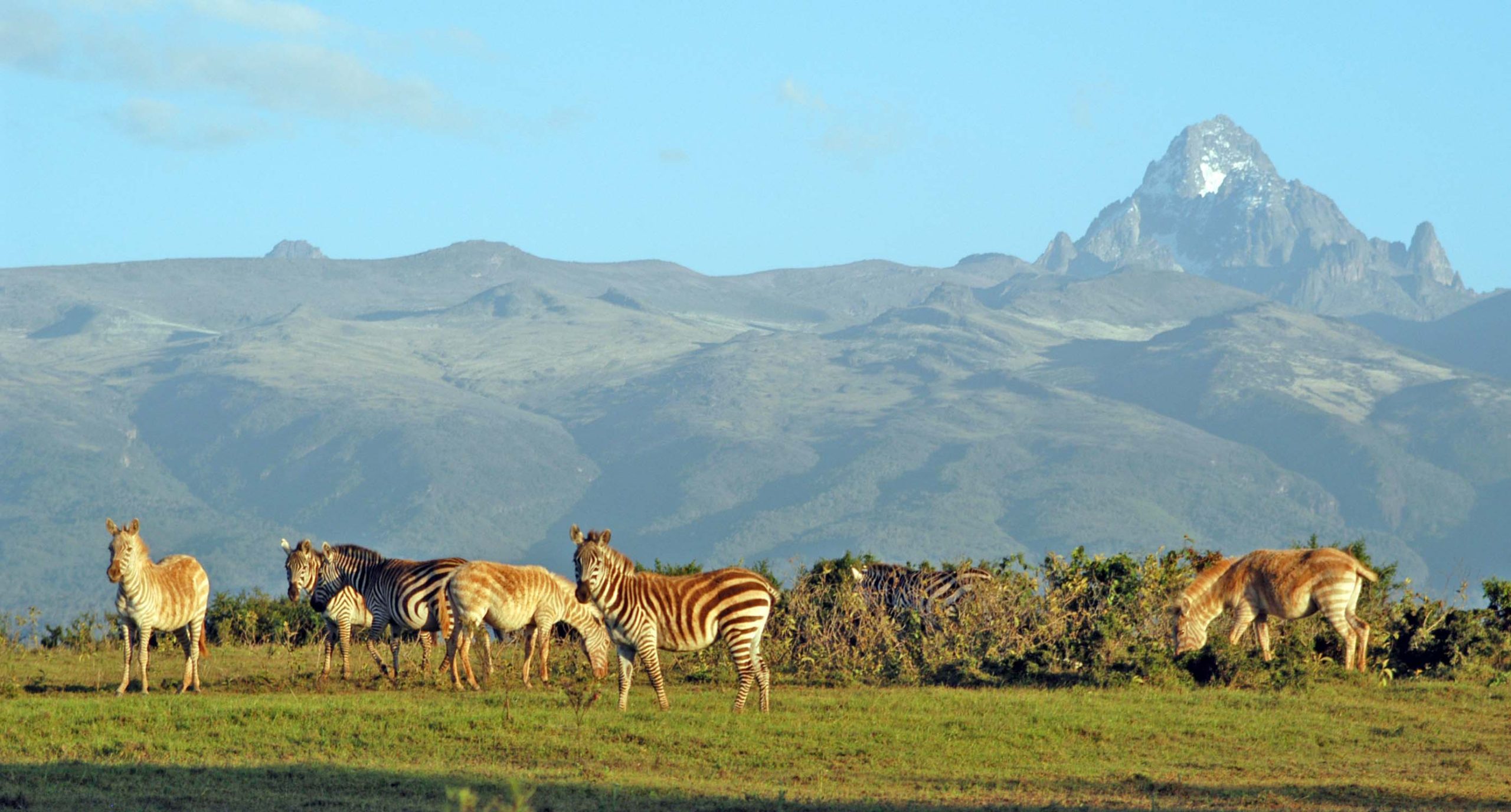
Mount Kenya National Park & Reserve
Majestically standing, Mount Kenya that straddles across Meru and Nyeri counties and part of Kirinyaga is the second highest peak in Africa standing at 5,199m high. It is an ancient extinct volcano.
There are 12 remnant glaciers on the mountain, all receding rapidly, and four secondary peaks that sit at the head of the U-shaped glacial valleys.
With its rugged glacier-clad summits and forested middle slopes, this mountain is one of the most impressive landscapes in East Africa. The park hosts approximately 20 lakes and tarns. Three major peaks dot the mountainous scenes.
These are; Batian (5,199m) & Nelion (5,188m). The two are mainly for visitors interested in technical climbing activities. The third peak is Point Lenana (4,984m).
The scenery and ecological formations surrounding this World Heritage Site are breathtakingly beautiful. The Park is also a Biosphere Reserve. To the Kikuyu tribesmen, Mt. Kenya is the home of the Supreme Being; Ngai, a name also used by the Maasai and Kamba communities. In traditional prayers and sacrifices, Ngai is addressed by the Kikuyu as Mwene Nyaga; Possessor of Brightness.
The name comes from Kiri-Nyaga the Kikuyu name for Mt. Kenya, meaning Mountain of Brightness – Ngai’s official home, a place to be treated with respect by visitors who come here among other things seeking divine and spiritual nourishment. Pristine wilderness, lakes, tarns, glaciers and peaks of great beauty, geological variety, the forest, mineral springs, rare and endangered wildlife species, high altitude adapted game, unique montane and alpine vegetation with 11 species of endemic plants are a sight. Wildlife includes buffalo, elephants, black and white colobus and Sykes monkeys, rock and tree hyrax, white tailed mongoose, suni, black fronted duiker, mole rat, bushbucks, waterbuck and Elands. Animals rarely seen include leopard, bongo, giant forest hog, Suni antelope, Mt. Kenya mole rat,
skinks(lizards)montane viper, and a variety of owls. Over 130 bird species have been recorded. Visitors can enjoy game viewing, mountain climbing, and camping, picnicking, bird watching, scenery and nature photography.
Hells Gate National Park
Named for the intense geothermal activity within its boundaries, the Hell’s Gate National Park is a remarkable quarter of the Great Rift Valley.
Spectacular scenery including the towering cliffs, water-gouged gorges, stark rock towers, scrub clad volcanoes and belching plumes of geothermal steam make it one of the most atmospheric Parks in Africa.
Hell’s Gate is an ideal venue for a day trip from Nairobi where, in addition to the bio-diversity that includes raptors, visitors can enjoy mountain biking, rock climbing and a natural geothermal spa.
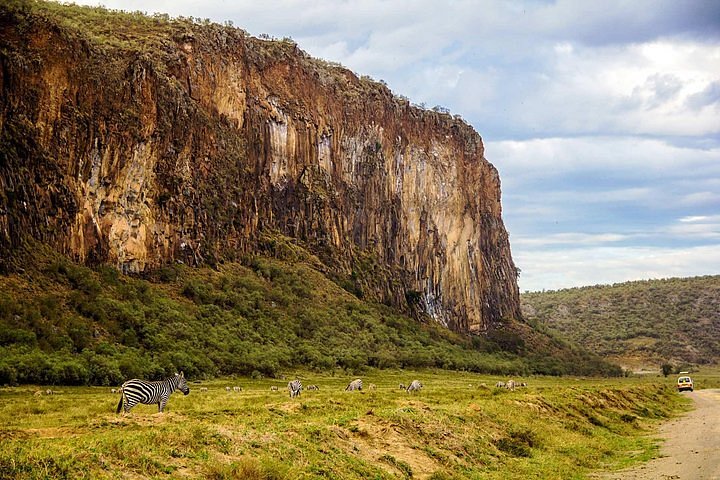
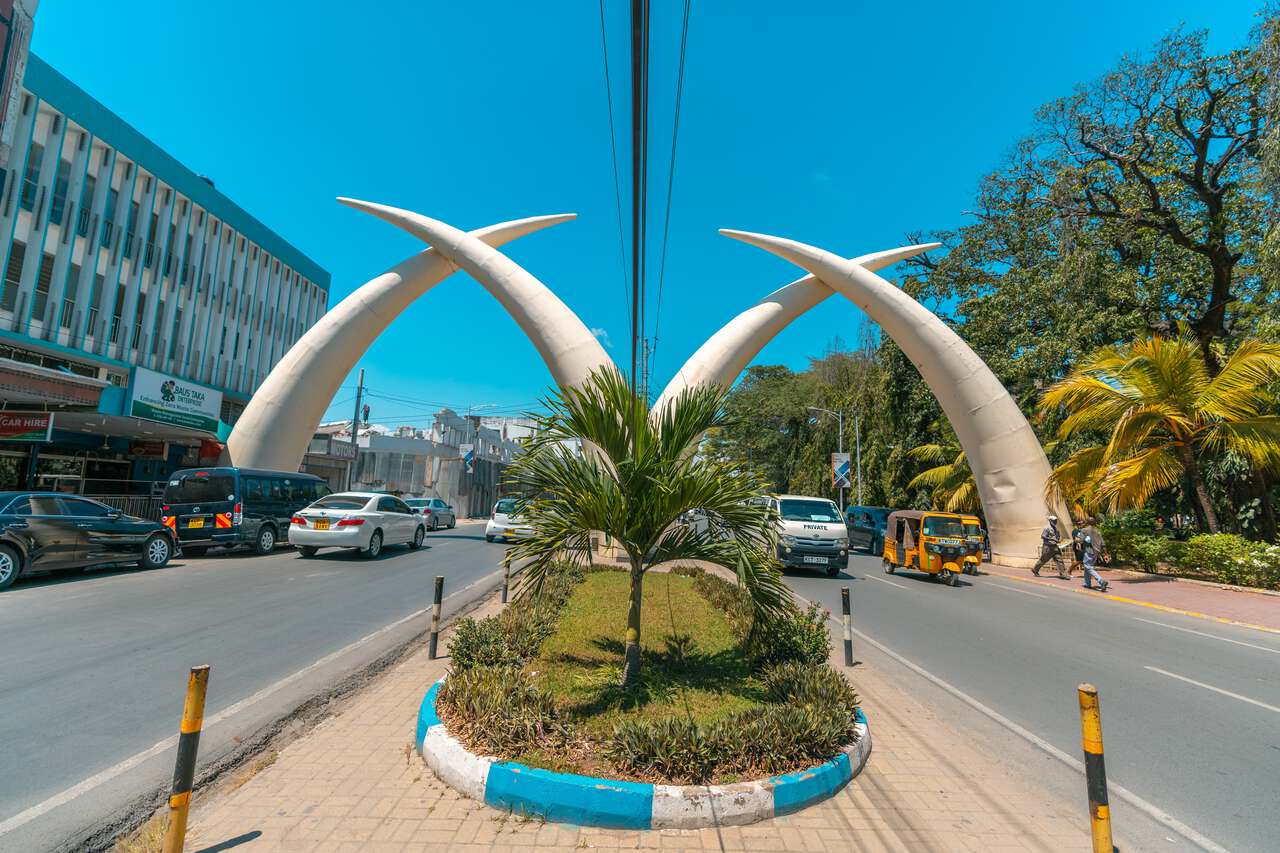
Mombasa
Mombasa is a coastal city in southeastern Kenya along the Indian Ocean. It was the first capital of British East Africa, before Nairobi was elevated to capital city status in 1907. It now serves as the capital of Mombasa County.
The town is known as “the white and blue city” in Kenya. It is the country’s oldest (c. 900 A.D.) and second-largest city after Nairobi, with a population of about 1,208,333 people according to the 2019 census. Its metropolitan region is the second-largest in the country and has a population of 3,528,940 people.
Mombasa’s location on the Indian Ocean made it a historical trading centre, and it has been controlled by many countries because of its strategic location. Kenyan school history books place the founding of Mombasa as 900 A.D.
It must have been already a prosperous trading town in the 12th century, as the Arab geographer al-Idrisi mentions it in 1151. The oldest stone mosque in Mombasa, Mnara, was built in c. 1300. The Mandhry Mosque, built in 1570, has a minaret that contains a regionally specific ogee arch.
In the late pre-colonial period, it was the metropolis of a plantation society, which became dependent on slave labour based around the ivory trade. Throughout the early modern period, Mombasa was a key node in the complex and far-reaching Indian Ocean trading networks. Its key exports then were ivory, millet, sesamum and coconuts.
Today, Mombasa is a tourism-based town, home to one of the state houses, with an extra-large port and an international airport
Diani Beach
Diani Beach is a major beach on the Indian Ocean coast of Kenya (in eastern Africa). It is located 30 kilometres south of Mombasa, in Kwale County. It has been voted Africa’s leading beach destination for the fifth time running since 2015.
Diani is one of the most prominent tourism resort areas of Kenya. The indigenous people of the area are the Digo, one of the nine ethnic communities known as the Mijikenda. Today the area includes Kenyans of various ethnicities who have migrated to Diani, drawn by the tourism related economy.
With a population of over 100,000 inhabitants, the Diani/Ukunda urban area is one of the largest at the Kenyan coast and forms part of the larger Mombasa metropolitan region. A small airstrip – Ukunda Airport – is located between the beach area and the Mombasa-Lunga Lunga. Diani Beach is also a popular kitesurfing, jet skiing, and snorkelling location.
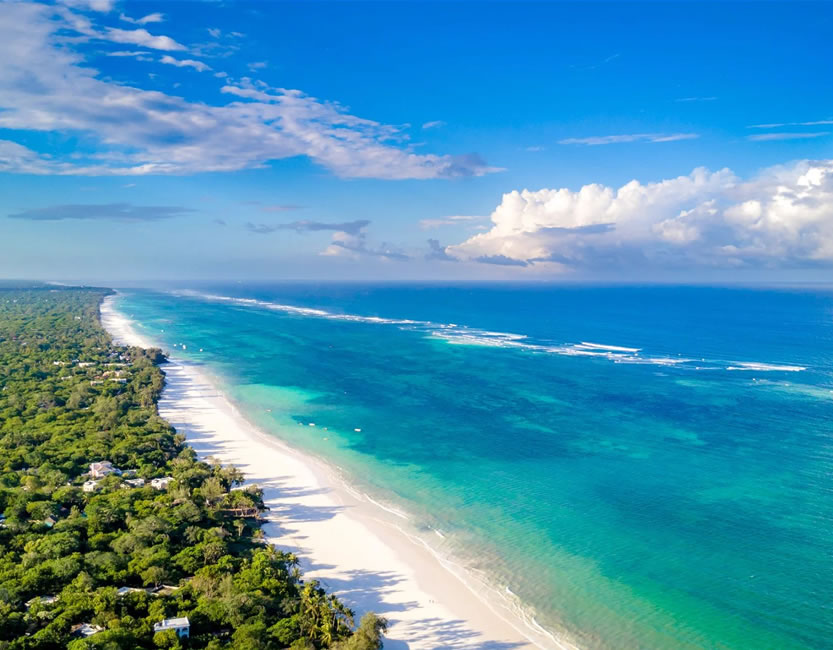
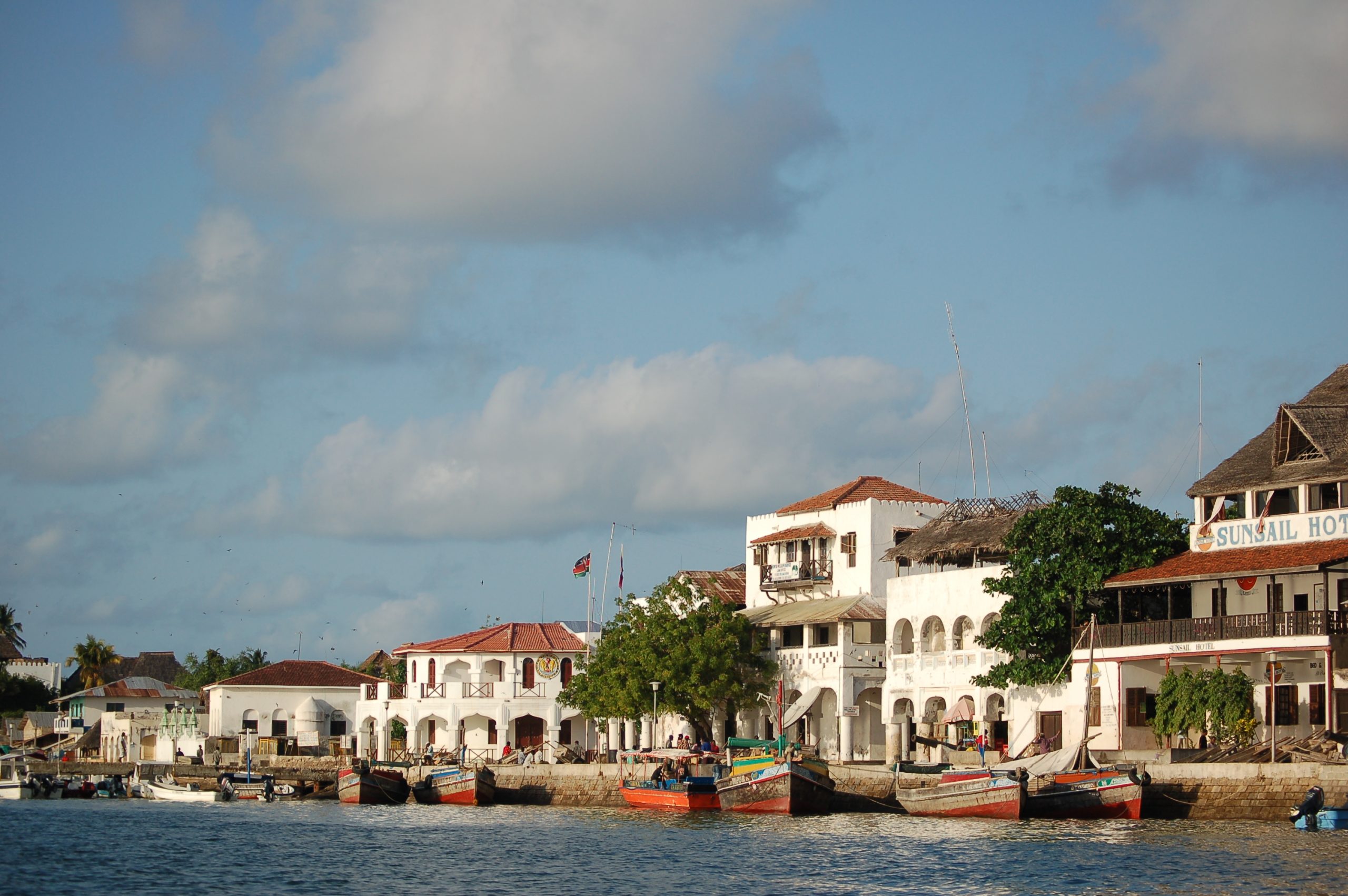
Lamu Island
Lamu Island is a distinctive beach and cultural travel destination in Africa. With a history that dates back to the 14th century, the island represents a time when life was much simpler, and you will quickly forget the stress and hectic pace of life back home.
In late 2001, the old town of Lamu was honoured with the designation of a World Heritage Site by UNESCO to signify the significant global cultural asset found in what has become the oldest settled Swahili town south of the Sahara.
The island is situated in the archipelago of the same name and shares the area with several other islands, including the two other larger islands of Pate and Manda. Access to these islands is primarily by boat, as only a small channel separates the islands from mainland Kenya
Malindi Beach
Located along the Indian Ocean, Malindi boasts pristine white-sand beaches, crystal-clear waters, and a year-round tropical climate. It’s the perfect place to soak up the sun and indulge in various water sports like swimming, snorkelling, and diving.
You can explore the incredible coral reefs and discover the vibrant marine life that thrives just below the surface.
Malindi is also rich in history and culture. You can visit the Gede Ruins, a 13th-century Swahili village that offers a glimpse into the past.
You can also explore the Vasco da Gama Pillar, a landmark that marks the spot where the Portuguese explorer first landed in East Africa.
